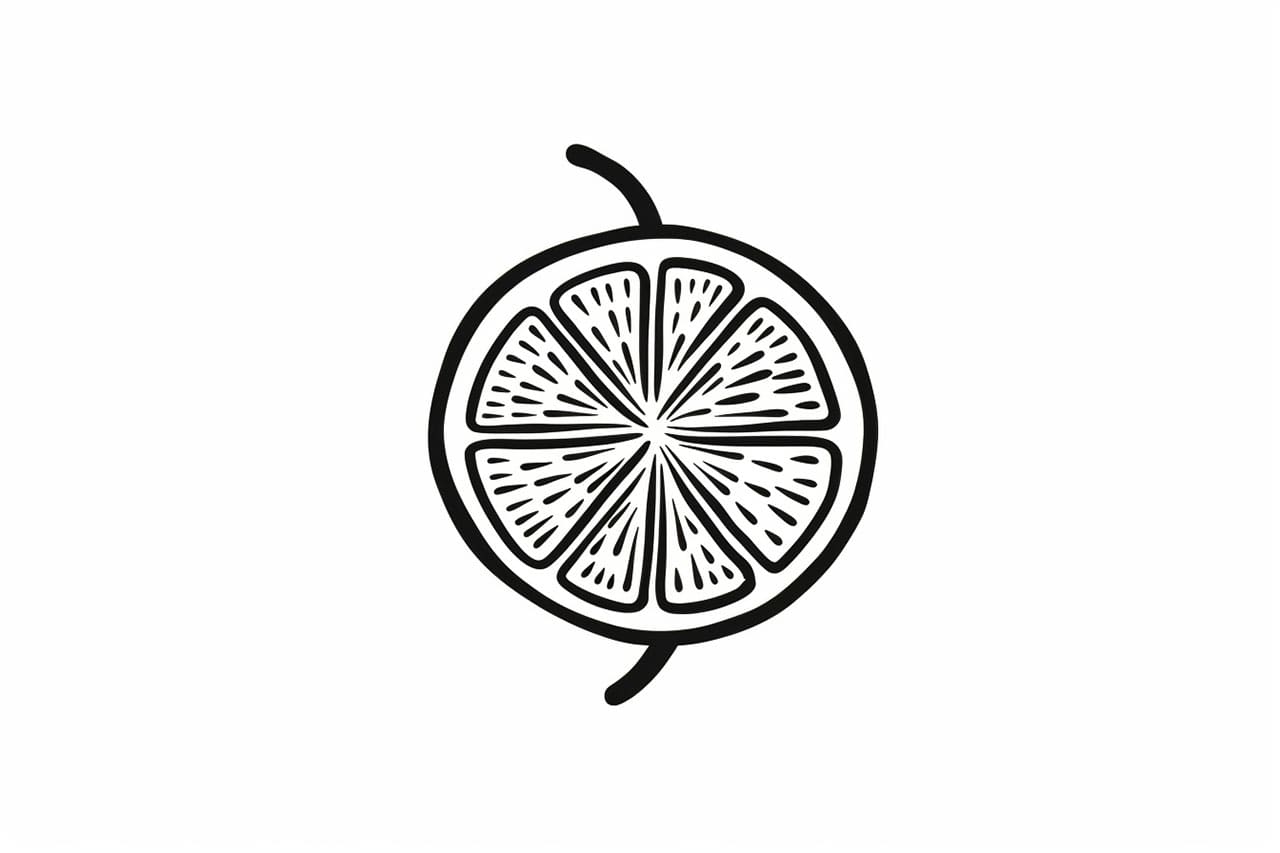Welcome to this step-by-step tutorial on how to draw a lemon. Drawing a lemon can be a refreshing and delightful experience. Whether you want to sketch a lemon for a still life drawing or a fun art project, this tutorial will guide you through the process. With practice and attention to detail, you can create a beautiful and realistic lemon drawing that looks as juicy as the real thing. Let’s get started!
Materials Required
- Pencil
- Eraser
- Drawing paper
Step 1: Draw the Basic Shape
To begin, draw the basic shape of the lemon. Draw a circle in the center of your paper. This circle will be the body of the lemon. Make sure that the circle is not too perfect, as lemons have an irregular shape.
Step 2: Add the Stem
Next, draw the stem of the lemon. Draw a short, curved line extending from the top of the lemon. Add a small oval shape at the end of the line to complete the stem.
Step 3: Draw the Details
Now, let’s add the details to the lemon drawing. Draw small circles and ovals on the surface of the lemon to represent the pores and texture. Add some lines around the lemon to show the dimples and creases.
Step 4: Add Shading and Highlights
Now it’s time to give your lemon drawing some depth and dimension. Add shading to the lemon to make it look three-dimensional. Shade in the areas where shadows would naturally fall, such as the sides and the bottom of the lemon. Leave some areas on the top and sides of the lemon lighter to represent highlights.
Step 5: Final Touches
Take a step back and look at your drawing as a whole. Make any necessary adjustments and add any final touches that you feel are necessary to make your lemon drawing look as juicy and realistic as possible.
Conclusion
Congratulations! You have successfully drawn a lemon that looks good enough to squeeze. With practice and creativity, you can draw a variety of fruits and vegetables with different shapes and textures. So, grab your pencil and let your artistic skills shine as you create your own mouth-watering fruit drawings with this “How to Draw a Lemon” tutorial.
Fun Facts About Lemons
- Lemons are a rich source of Vitamin C, which boosts the immune system and promotes healthy skin.
- The first substantial cultivation of lemons is believed to have occurred in Assam, a region in Northeast India.
- Lemons were introduced to Europe during the time of Ancient Rome and have since become integral to various cuisines.
- In the past, sailors used lemons as a preventative for scurvy, a disease caused by Vitamin C deficiency during long sea voyages.
- Lemon juice is composed of about 5% citric acid, which gives lemons their characteristic sour taste.
- The essential oil of lemons is used in aromatherapy for its invigorating and mood-enhancing properties.
- There are several varieties of lemons, including the popular Eureka and Lisbon types, as well as the sweeter Meyer lemon.
- Lemons are often used in cleaning products due to their antibacterial properties and ability to remove stains and odors.
- It takes an average lemon tree about three to five years to reach full fruit-bearing maturity.
- Beyond culinary uses, lemon zest and juice are frequently used as natural preservatives in food and skincare products.
Suggestions for Scenes and Settings for Lemon Drawings
- Lemon Orchard: Illustrate a bountiful lemon orchard with rows of lemon trees, their branches adorned with bright yellow fruits.
- Mediterranean Market: Depict a bustling Mediterranean market scene with stalls overflowing with fresh lemons, alongside olives and herbs.
- Rustic Kitchen: Draw the warmth of a rustic kitchen with lemons placed in a beautiful wooden bowl on a sunlit counter.
- Tropical Getaway: Create a scene of a refreshing tropical drink featuring lemon slices on a sandy beach under a palm tree.
- Lemonade Stand: Illustrate a charming lemonade stand on a sunny day, complete with a smiling vendor and lemons in abundance.
- Baking Scene: Draw a baking setup where lemons are being zested and juiced for a lemon cake, complete with measuring spoons and ingredients.
- Sunset Grove: Capture the ambiance of a serene grove at sunset, where ripened lemons cast long shadows on the grass.
- Lemon Festival: Depict a lively lemon festival with decorations, stalls, and people enjoying lemon-themed foods and drinks.
- Farmers’ Market Basket: Draw a close-up of a basket filled with fresh produce and lemons as the focal point at a local farmers’ market.
- Culinary Presentation: Illustrate an elegant culinary presentation with lemon slices and zest artfully arranged on a gourmet dish.
Let these ideas inspire your creative process as you explore different ways to incorporate lemons into your artwork!









